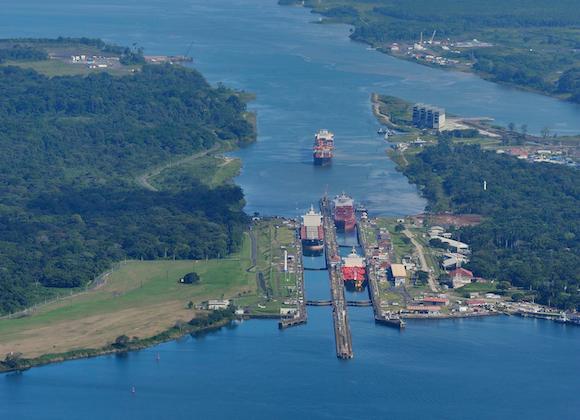Over a million tourists visit the Panama Canal each year, but many of them miss the best parts. This famous artificial waterway was chosen by the American Society of Civil Engineers as one of the seven wonders of the modern world. It connects the Atlantic and Pacific Oceans and was completed in 1914 after decades of trying and centuries of dreaming.
50 Miles That Inspire Awe
Most visitors see only the part of the canal that’s near Panama City, on the Pacific, but there is much more to it. You may be interested in taking a full-service Panama Canal cruise to enjoy the adventure of traveling the entire length of it.
The canal crosses the Isthmus of Panama, which is 50 miles across, the narrowest part of the piece of land that connects North and South America. The area is unusually biodiverse, with flora and fauna from both continents, including a thousand species of birds.
An Engineering Marvel
Before the canal existed, there was no good way for a ship to get from one ocean to the other. The best alternative — and it was terrible — was to go around Cape Horn at the southern tip of South America. Another option was to go through the Bering Strait, far north in the Arctic.
When the Panama Canal opened in 1914, the entire world was proud of itself. The canal’s construction was a near-miraculous achievement and the embodiment of the “can do” spirit of the times.
By Ship Across the Isthmus of Panama
What happens to a ship that enters the Panama Canal? From the Atlantic side, the ship crosses the natural bay at the Port of Colón and is channeled to the first of three sets of locks, the Gatun Locks. Here, over the course of a little more than a mile, the ship is lifted in three stages, ending up 87 feet above sea level in the manmade Gatun Lake.
Gatun Lake is a biodiverse area of dense rainforest that is nearly inaccessible from anywhere else. The Smithsonian Institution operates a scientific research station here on Barro Colorado Island. The lake has become an ecotourism destination, part of a 180-square-mile ecological zone.
Ships travel 15 miles west on Gatun Lake, then another 5 miles on a river, then another 8 miles via the Culebra Cut, an engineering and construction feat many thought would never be completed due to the immense challenges involved. Panama’s continental divide is here, and the Centennial Bridge shortly thereafter.
Next, the ship starts its descent via the mile-long Pedro Miguel Locks, which lowers it 31 feet to the artificial Miraflores Lake. A mile later, the Miraflores Locks lower the ship in two stages about 54 feet, depending on the tides, to sea level. The ship arrives in Balboa Harbor near Panama City and is channeled into the Pacific Ocean, passing under the Bridge of the Americas.
The Miraflores Visitor Center
The Miraflores Locks are the part of the canal that most visitors see. The Miraflores Visitor Center is located at the locks and has a big observation deck. There’s also a museum, an IMAX movie about the canal, a gift shop, snack bars, and even a fancy restaurant on top.
Numerous day tours are available from Panama City, about 45 minutes away, that can pick you up from your hotel and take you to the locks and back. You can even travel down the locks on a ship if you book ahead.
About 40 ships a day pass through the Panama Canal — from cargo ships to cruise ships, from tankers to yachts. You can call the visitor center to make sure what times they’ll be coming through the Miraflores Locks, so you don’t visit during a slow stretch. Specific times of day are set aside for exclusively east to west or west to east travel, but most of the time it’s a mix.
Cruising the length of the Panama Canal is a world-class adventure. But even if you can visit only a small part of the canal’s 50 miles, the experience is sure to be fascinating.



